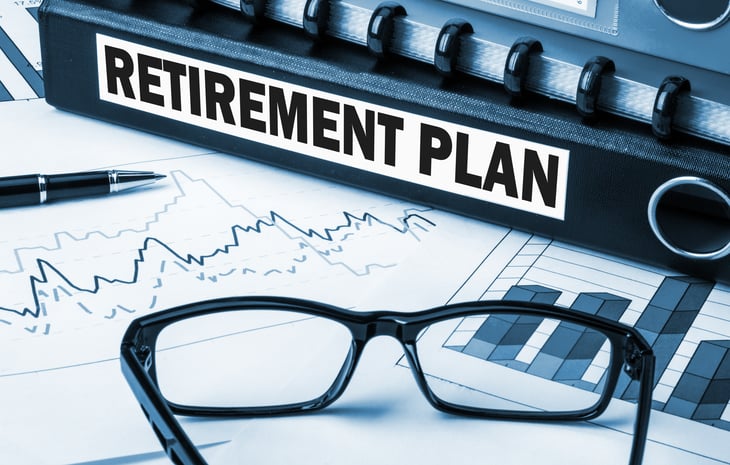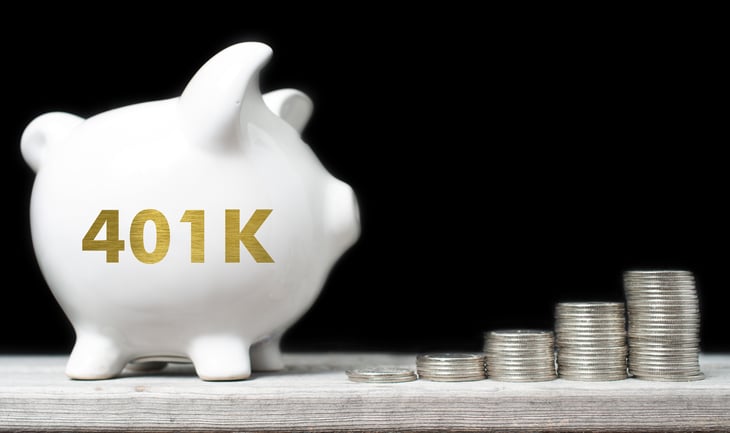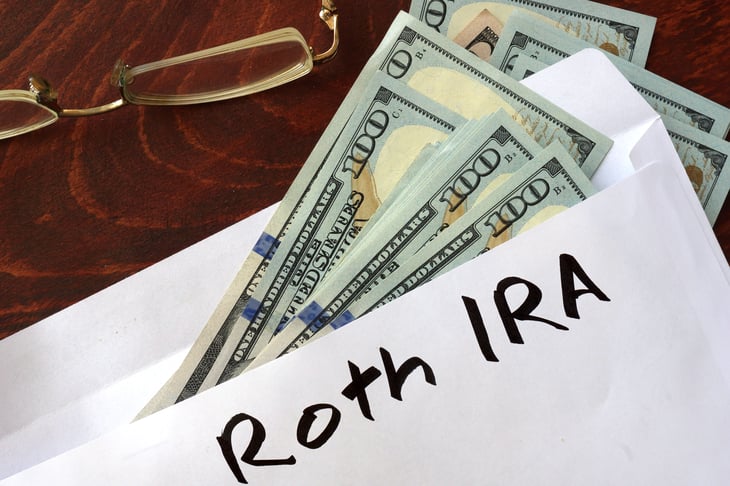
Editor's Note: This story originally appeared on SmartAsset.com.
Having one or more retirement accounts can help you realize your long-term financial goals, including growing wealth and securing a comfortable retirement. Workplace plans, individual retirement accounts and self-employed retirement accounts are just some of the ways you can save.
With so many options to choose from, you may be wondering where to put your money. Reviewing the best retirement plans for 2022 can help with deciding how to invest for the future. Another big help with retirement planning is working with a financial adviser experienced in this area.
Keep reading to learn more about the retirement plans you can use to build your savings for the future.
Best Retirement Plans for 2022

Workplace retirement plans can offer several benefits for retirement savers, including tax advantages and the potential to get free money. If you don’t have a plan at work, there are other ways to save for retirement. Here are the best retirement plans to consider now.
1. Defined Benefit Plans (Pension Plans)

Defined benefit plans are so named because they provide a defined benefit for employees. In other words, they offer some predictability in planning out your retirement income because the amount you’ll receive is largely predetermined.
Here’s how they work in a nutshell: Employers pay in a certain amount of money to the plan on behalf of each employee. When you retire, you can receive either a lump-sum payment or monthly payments based on how much you earned over the course of your career and your years of service.
While pension plans are becoming the exception rather than the rule for workplace retirement plans, there are employers that still offer them. In terms of what makes them one of the best retirement plans, defined benefit plans offer simplicity for employees. You don’t have to elect contributions or choose investments. And you have the reassurance of knowing that you’re guaranteed to receive something when you retire.
The downside is that taking full advantage of a defined benefit pension plan typically requires you to stay with the same employer throughout your career. So if you anticipate changing jobs at any point, then a pension plan may not yield as much benefit when it’s time to retire.
2. Traditional 401(k) Plans

A 401(k) plan is arguably the most popular option for workplace savings among employers. These plans are defined contribution plans, meaning that what you get out of the plan at retirement depends on what you put into it during your working years.
With a 401(k) plan, you make elective deferrals from your salary, up to the maximum amount allowed by your plan. Your employer can also make matching contributions, again, up to the maximum amount specified by the plan.
Traditional 401(k)s are funded with pre-tax dollars so you get an above-the-line tax deduction for contributions. When withdrawing money in retirement, the money is taxed at ordinary income tax rates.
Unlike pension plans, 401(k)s can allow for hardship withdrawals or loans. That might be useful if you’re in a tight spot financially and don’t have emergency savings on standby. Once you retire and stop working, you’re required to take minimum distributions starting at age 72.
3. Roth 401(k) Plans

A Roth 401(k) has much in common with a traditional 401(k). Both are funded through elective salary deferrals and both allow for employer matching contributions. Both are subject to the same annual contribution limits. And you’ll still need to follow the required minimum distribution rules for a Roth 401(k) starting at age 72 if you’re no longer working.
What’s different about Roth 401(k) plans is their tax treatment. Rather than being funded with pre-tax dollars, they’re funded with after-tax dollars. That means you don’t get an up-front tax deduction for any money you contribute. Instead, you get the benefit of 100% tax-free qualified withdrawals in retirement.
Whether it makes sense to choose a traditional or Roth 401(k) may depend on what tax bracket you’re in now and where you anticipate being at retirement. If you think you’ll be in a lower tax bracket when you retire, then getting a tax deduction now could make more sense financially. On the other hand, if you think you’ll be in a higher tax bracket when you retire, then tax-free withdrawals may be more appealing.
4. Solo or Individual 401(k)

If you run a small business and are self-employed, you can still take advantage of 401(k) benefits. You can do so by establishing a solo or individual 401(k) plan.
This is a 401(k) that’s designed for business owners who have no other employees, other than their spouses. You can make contributions to a solo 401(k) as both an employer and an employee, though there are annual limits on how much you can contribute.
Setting up this type of retirement plan involves some paperwork, and it may be more complicated than other self-employed retirement plan options. But if you don’t have employees and don’t plan to hire any, it could be a good fit if you want to save for retirement while enjoying tax benefits.
5. 403(b) Plans

If you work in the public schools system or for a nonprofit or church, you may have the option of saving for retirement in a 403(b) plan in place of a 401(k). A 403(b) plan is a tax-advantaged way to save since you can make pre-tax contributions, which grow tax-deferred. Once you retire, qualified withdrawals are subject to ordinary income tax.
Depending on your employer, you may have a Roth 403(b) as an option. Like a Roth 401(k), you’d save after-tax dollars and then be able to withdraw them tax-free when you retire. Employers can make matching contributions, though they’re not required to. Depending on the plan, you may be able to take a 403(b) loan if you have a financial hardship.
6. 457(b) plans

State and local government employees can save in a 457(b) plan, which is also tax-advantaged. This is another type of defined contribution plan, which means the amount you can withdraw in retirement depends on how much you put in and how that money grows during your working years. This is one of the best retirement plans for state and local government employees because any money you withdraw before age 59.5 isn’t subject to a 10% early withdrawal penalty.
That’s a plus if you need to retire early because of an illness or disability. The downside of these plans, however, is that they typically don’t come with an employer match.
7. Individual Retirement Accounts (IRAs)

Individual retirement accounts can be used to save in addition to a workplace plan or defined benefit pension plan. Or if you don’t have access to either of those, you could use an IRA to fill in the gaps in your retirement savings efforts.
IRAs can be traditional, meaning they’re funded with pre-tax dollars, or Roth, meaning they’re funded using after-tax contributions. Both traditional and Roth IRAs are subject to the same annual contribution limits.
With a traditional IRA, contributions may be tax-deductible and growth is tax-deferred. You’d pay ordinary income tax on withdrawals in retirement and withdrawals before age 59.5 may be subject to taxes and penalties. Required minimum distributions start at age 72 for these retirement accounts.
With a Roth IRA, there’s no deduction for contributions, but qualified withdrawals are tax-free. You can also withdraw the money you contribute to a Roth IRA (not earnings) at any time without incurring a tax penalty. There are no required minimum distributions from a Roth IRA, so you can continue making new contributions as long as you’re working and have earned income.
8. SIMPLE IRA

A SIMPLE IRA may be one of the best retirement plans for small businesses that have employees and want an alternative to 401(k) plans. If you have this type of plan at work, then you can benefit from matching contributions or non-elective contributions made on your behalf, depending on what your employer chooses.
You can also save money in a SIMPLE IRA as an employee, though the annual contribution limits are below what you could save in a traditional or Roth 401(k). In terms of tax treatment, a SIMPLE IRA is similar to a traditional 401(k), in that contributions grow tax-deferred and are subject to ordinary income tax when you withdraw money in retirement.
9. SEP IRA

A SEP IRA or Simplified Employee Pension is a retirement savings plan for small-business owners and self-employed workers. A SEP IRA offers higher contribution limits than a SIMPLE IRA and contributions are made using pre-tax dollars. Withdrawals are taxable at ordinary income tax rates in retirement.
If you’re self-employed you might choose a SEP IRA over a solo 401(k) or IRA for a few reasons. First, it’s easier to set up and maintain a SEP IRA versus a solo 401(k), in terms of the paperwork and annual reporting that’s required. You can open a SEP IRA at an online brokerage in minutes and make your first contribution.
Second, the annual contribution limits are the same for SEP IRAs as solo 401(k)s, so you don’t sacrifice anything there either. Compared with a traditional or Roth IRA, you can save much more in a SEP IRA year-over-year, allowing you to grow more wealth for retirement. (Note, however, that unlike solo 401(k)s, these plans don’t offer catch-up contributions for those over 50.)
10. Other Types of IRAs

Aside from traditional and Roth IRAs or SIMPLE and SEP IRAs, there are two other ways to leverage an IRA for retirement savings. The first is a spousal IRA.
A spousal IRA essentially allows a non-working spouse to save for retirement. Normally, you need to have earned income to contribute to an IRA. But if you’re married and your spouse has earned income, you can piggyback off that to save money in an IRA. This can be a traditional or Roth IRA and it’s subject to the same annual contribution limits as a regular IRA.
A rollover IRA is another option for retirement savings. This type of IRA is funded with money you move or roll over from another retirement account, such as a 401(k) or another type of IRA. You can open a rollover IRA at most online brokerages, and the brokerage can handle the transfer of money for you. This can help avoid unintended tax consequences.
11. Federal Retirement Plans

If you’re a federal government employee, you may have one of several options to choose from for retirement savings. Those include:
- Railroad employee benefits
- Thrift Savings Plans (TSP)
- Defined benefit pension plans
These plans can be offered by federal agencies to their employees as part of a benefits package. They’re not to be confused with federal retirement benefits offered by Social Security.
Social Security retirement benefits are paid out to retirees, based on their lifetime earnings. The earliest you can receive Social Security retirement benefits is age 62, though this may result in a permanent reduction in your monthly benefit amount. You can increase your benefit amount by delaying benefits past your full retirement age.
Generally speaking, Social Security is reliable but it’s not one of the best retirement plans if you want control over how much you’ll receive. Contribution to a 401(k) or an IRA can provide more certainty since you can choose how much to save and where to invest it.
12. Less Common Retirement Plans

In most cases, if you’re offered a retirement plan at work it’s either going to be a defined benefit plan or a defined contribution plan. But there are some other tools employers can offer to make saving for retirement easier. For example, profit-sharing plans allow you to save and invest for retirement by sharing in the profits generated by your company. Only employers contribute to these plans, not employees. But contributions aren’t required year-to-year the way they are with some workplace plans.
Cash balance plans are another option. These plans are similar to defined benefit plans but they use a different formula for calculating how much you’ll receive in retirement. Instead of guaranteeing that you’ll receive a certain percentage of your income in benefits, you receive payments based on a credit system.
When you retire you’ll receive payments based on the credits earned. These plans tend to be cost-effective for employers, but compared with a traditional pension they may provide less in the way of retirement benefits to employees.
The Bottom Line

The best retirement plan for you is ultimately the one that allows you to save the most money while enjoying maximum tax benefits. That being said, these options illustrate the wide variety of ways you have to save and invest for retirement in 2022 and beyond.






Add a Comment
Our Policy: We welcome relevant and respectful comments in order to foster healthy and informative discussions. All other comments may be removed. Comments with links are automatically held for moderation.